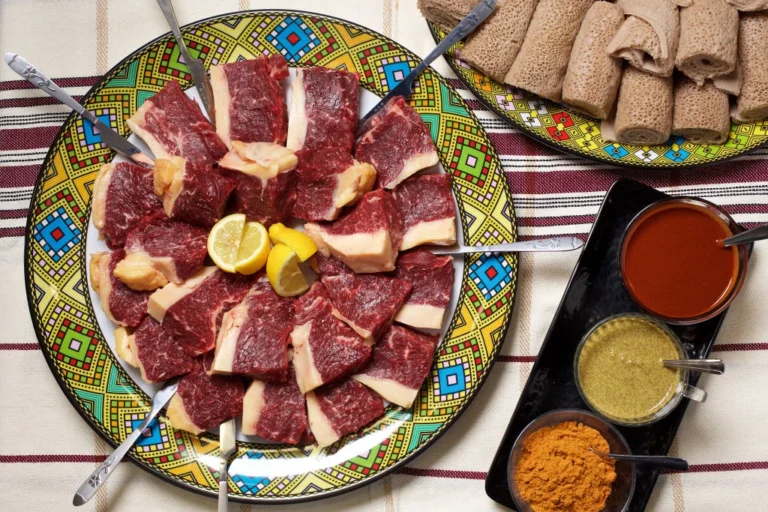Introduction: Exploring Ethiopian Cuisine
Ethiopian cuisine is a delightful mix of spicy and savory flavors, with an emphasis on communal dining and sharing plates. Ethiopian cuisine is characterized by the use of spices and herbs, which add depth and complexity to dishes. The use of injera, a sourdough flatbread made from teff flour, is a staple of the cuisine, serving as a versatile base for all manner of dishes, including stews, dips, and sauces.
If you’re looking to explore Ethiopian cuisine, you’re in for a treat. The cuisine offers a rich variety of flavors and textures, with a range of dishes that are sure to delight your palate. In this article, we’ll explore some of the most popular Ethiopian sauces and condiments that you can use to add flavor and depth to your meals.
A Guide to Ethiopian Sauces and Condiments
Ethiopian cuisine is famous for its range of sauces and condiments, each of which brings a unique flavor and texture to the table. Whether you’re looking for something spicy or savory, there’s a sauce or condiment for every palate. Here’s our guide to some of the most popular Ethiopian sauces and condiments.
Berbere: The Flavorsome Spice Blend
One of the most popular Ethiopian spices is berbere, a flavorful spice blend made from a mix of chili peppers, garlic, ginger, and other spices. Berbere adds a complex, smoky flavor to dishes, and is used in a range of stews and sauces. It’s often used to flavor meats and vegetables, and can be used as a rub for grilled meats.
Niter Kibbeh: Ethiopian Clarified Butter
One of the most important ingredients in Ethiopian cuisine is niter kibbeh, a type of clarified butter that is flavored with spices and herbs. Niter kibbeh is used in a range of Ethiopian dishes, adding flavor and depth to stews and sauces. It’s often made with a mix of spices, including cinnamon, cloves, and cardamom.
Awaze: The Versatile and Spicy Sauce
Awaze is a spicy sauce that is made with a mix of chili peppers, garlic, and other spices. It’s often used as a condiment for grilled meats and vegetables, and adds a spicy kick to any dish. Awaze can be made with different types of chili peppers, depending on the level of heat that you prefer.
Shiro: The Nutritious and Flavorful Dip
Shiro is a nutritious and flavorful dip that is made from ground chickpeas or lentils. It’s often served as a dip with injera, and can also be used as a base for stews and sauces. Shiro is a great source of protein and fiber, and is a popular vegan option in Ethiopian cuisine.
Injera: The Staple Bread to Accompany Sauces
Injera is a sourdough flatbread that is made from teff flour. It’s an essential component of Ethiopian cuisine, serving as a versatile base for all manner of dishes. Injera is typically used as a utensil in Ethiopian cuisine, with diners using torn pieces of injera to scoop up stews and sauces.
Mitten Shiro: The Savory Chickpea Stew
Mitten shiro is a savory chickpea stew that is typically served with injera. It’s made with ground chickpeas, and is flavored with a range of spices and herbs. Mitten shiro is a popular vegan option in Ethiopian cuisine, and is a great source of protein and fiber.
Conclusion: Enjoying Ethiopian Flavors at Home
Ethiopian cuisine offers a rich variety of flavors and textures, with a range of dishes that are sure to delight your palate. Whether you’re looking for something spicy or savory, there’s a sauce or condiment for every palate. By incorporating some of these popular Ethiopian sauces and condiments into your meals, you can enjoy the delicious flavors of Ethiopian cuisine at home. So why not give it a try?

